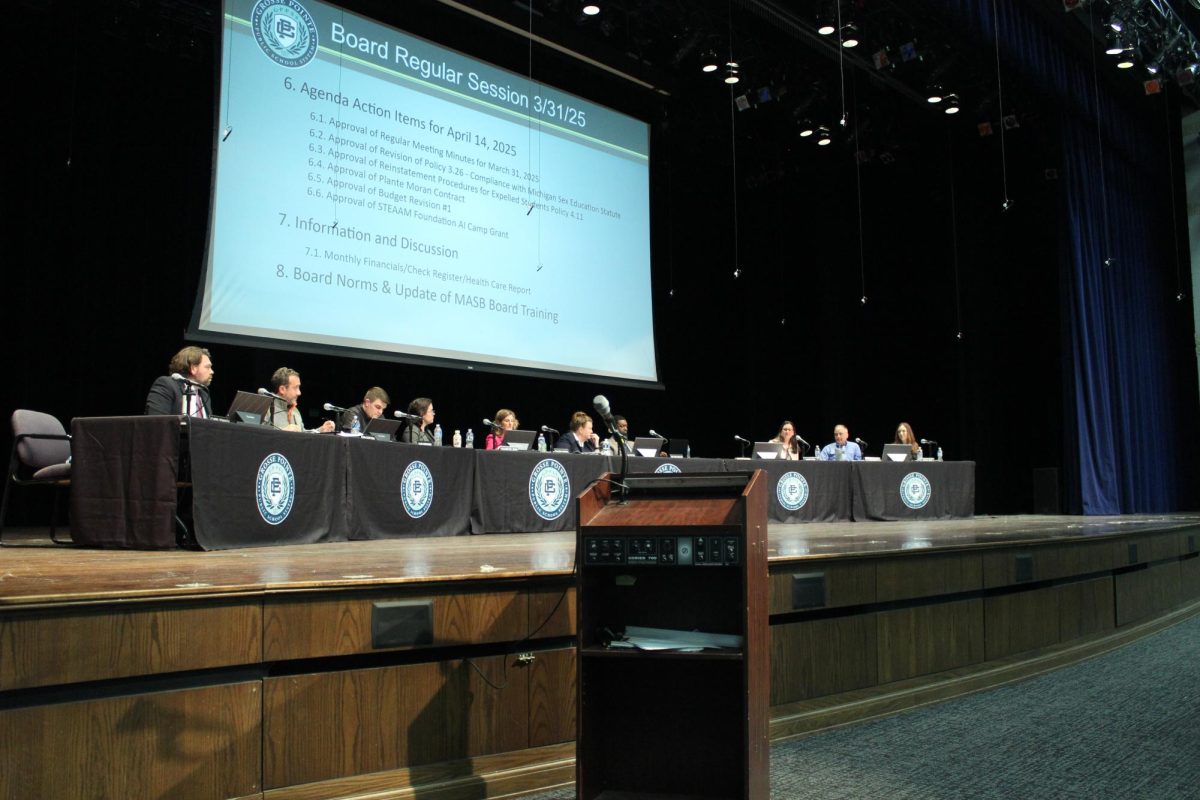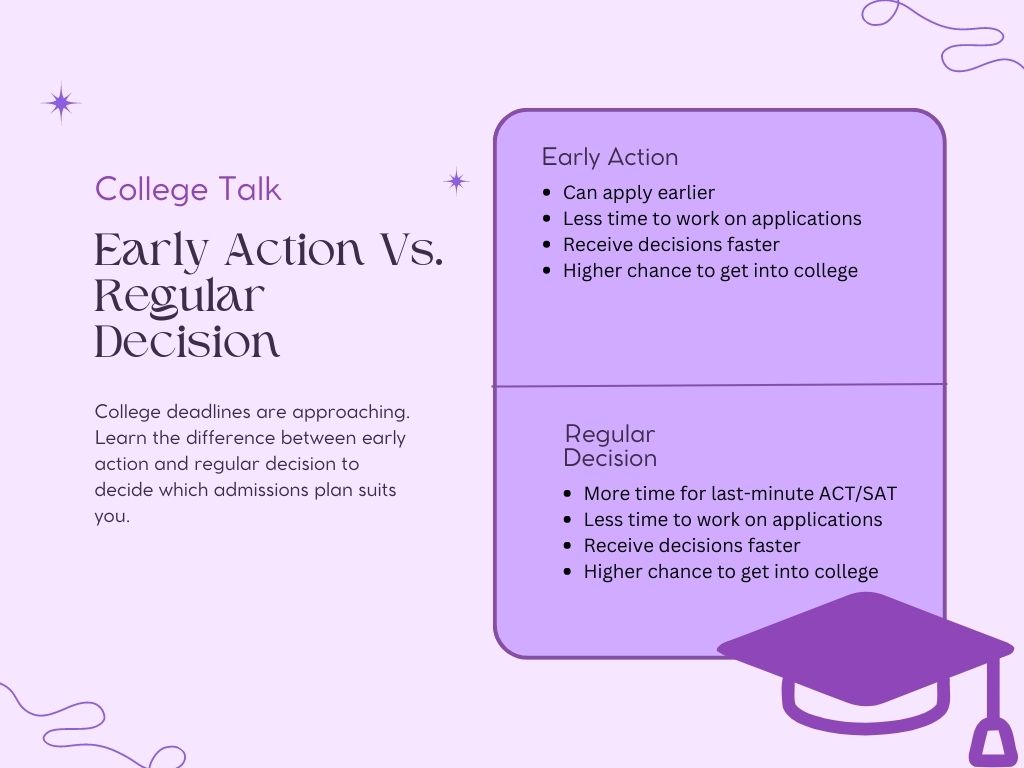Weighing the options: early action versus regular decision
November 8, 2022
With college deadlines approaching, students begin debating whether to pursue early action or regular decision. Both options have their pros and cons, but the benefits of early action are just too good to turn down.
Early action is an admission option that allows students to submit their applications earlier and hear back from colleges earlier. The early action deadline is November 1 at 11:59 p.m., and if this deadline is not hit, the application will be moved to regular decision. Early action has many benefits, but also some negatives. The biggest benefit of early action is that students have a higher chance of getting in. This is because when an application is submitted through early action, it is the first batch of applications colleges will look at and there is a smaller applicant pool. They are looking at fewer applications, there are less competitors, and they have more spots at the school to offer at the time. According to Vanderbilt University, in 2015, those who applied early decision had a 24% acceptance rate, while those who applied regular decision had an 8% acceptance rate. The school is extremely selective as is, but the same concept can be carried out for most colleges. One of the only cons associated with early action is the quick deadline. The November deadline forces students to have their applications ready early, and could potentially cause a student to submit an application that they’re not proud of or one that is not their best. A lot of students could benefit from the extra time regular decision provides, and not experience any negative effects from waiting until the regular decision deadline.
Another application option is called “regular decision”. Regular decision is the traditional way to apply to college, and the option that the majority of students choose. Regular decision also comes with its benefits, one being there is more time to work on applications. The application process is long, and it’s important to make sure that the best possible version is being submitted. With the regular decision application being due Jan. 1, students submitting regular decision have two more months to work on essays and applications than with early action. A negative aspect of regular decision is that it will take longer to hear back from colleges. Those submitting early action will hear back around January/February, and those submitting regular decision won’t hear back until April/May. This can build a lot of stress surrounding decision day. Students who submit regular decision will have less time to decide where they want to go considering most decision deadlines are May 1.
To conclude, I believe that early decision is the smartest way to go when it comes to college application submission. I think submitting a couple months early is worth the limited downside if it yields a higher chance of acceptance. Hearing back early is also a major benefit considering the additional time to decide which school you want to attend. There’s more time to research, tour, ask questions and ensure you’re picking the school that’s perfect for you. Reaching the early deadline also takes a lot of stress off your shoulders as having applications completed early in the year prevents last-minute anxiety and cramming.. I encourage all students to consider early decision so they have time to perfect their application, while also hitting the early deadline of Nov. 1 to ensure the best possible chance of getting accepted.















































































